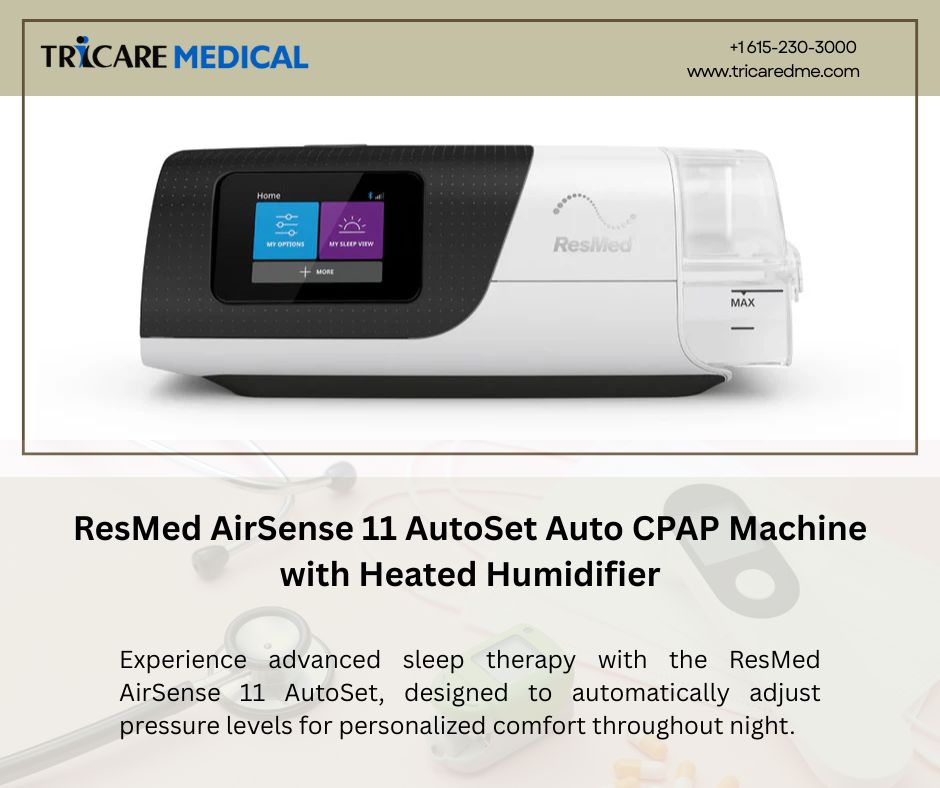Travel CPAP vs. Regular CPAP: Key Differences for Sleep Apnea Patients
- 5 min reading time
Sleep apnea affects millions worldwide, and Continuous Positive Airway Pressure (CPAP) therapy is the gold standard for treatment. However, not all CPAP machines are created equal. Regular CPAP machines are designed for consistent home use, while travel CPAPs cater to portability for those who travel frequently or lead active lifestyles. This blog explores the key differences between travel CPAPs and regular CPAPs, helping you decide which is best for your needs.
Size and Portability
The most noticeable difference between a travel CPAP and a regular CPAP is size. Regular CPAP machines are typically larger, heavier, and designed to remain stationary on a bedside table. Weighing between 2 to 10 pounds, they often include robust components like large humidifiers and extensive tubing, making them less practical for travel.
Travel CPAPs, on the other hand, are compact and lightweight, often weighing less than 2 pounds. Their small footprint—some are as small as a soda can—makes them easy to pack in a carry-on bag or backpack. For example, models like the ResMed AirMini or Philips DreamStation Go are designed with travel in mind, offering sleek designs that fit into tight spaces. This portability ensures users can maintain therapy during trips without lugging around bulky equipment.
Power Requirements
Power compatibility is another critical distinction. Regular standard CPAP machines typically require a standard AC power outlet, which is ideal for home use but can be limiting when traveling, especially in areas with unreliable electricity or different plug types. Some regular CPAPs may offer battery backup options, but these are often sold separately and add to the overall bulk.
Travel CPAPs are designed with flexible power options. Many models, such as the Transcend Micro, feature built-in or optional battery packs, allowing use in remote locations or during power outages. Additionally, travel CPAPs often support DC power adapters for use in cars or airplanes, and some are compatible with universal power converters, making them suitable for international travel. This versatility ensures uninterrupted therapy regardless of location.
Features and Functionality
While both types of CPAP machines deliver continuous airflow to keep airways open, regular CPAPs often come with advanced features tailored for home use. These may include integrated humidifiers, large displays, detailed data tracking, and connectivity options like Bluetooth or Wi-Fi for syncing with apps. These features enhance comfort and allow users to monitor therapy progress over time.
Travel CPAPs prioritize essential functionality to maintain portability. Some models may lack built-in humidifiers to reduce size and weight, though certain devices offer detachable humidifiers or waterless humidification systems. Data tracking may be simplified, with fewer metrics or reliance on companion apps for detailed reports. While travel CPAPs are effective for therapy, they may not offer the same level of customization or comfort settings as regular models, which could affect user experience during extended use.
Noise Levels
Noise is a consideration for both types of CPAP machines, especially for users sharing sleeping spaces. Regular CPAPs, with larger motors and fans, can sometimes produce noticeable noise, though modern models are designed to operate quietly, often below 30 decibels.
Travel CPAPs are engineered to be whisper-quiet, as travelers may use them in shared spaces like hotels or airplanes. Manufacturers prioritize low-noise motors to ensure minimal disturbance. For instance, the ResMed AirMini operates at around 25 decibels, making it one of the quietest options available. However, the smaller size may sometimes result in a slightly different sound profile, which sensitive users might notice.
Cost Considerations
Cost is a significant factor when choosing between a travel CPAP and a regular CPAP. Regular CPAP machines typically range from $500 to $1,000, depending on features and brand. Insurance often covers part or all of the cost for home-use CPAPs with a prescription, making them more affordable for long-term use.
Travel CPAPs tend to be pricier, ranging from $600 to $1,200, due to their specialized design and portability features. Insurance coverage for travel CPAPs may be limited, as they are often considered secondary devices. Users should weigh the cost against their travel frequency and therapy needs to determine if a travel CPAP is a worthwhile investment.
Ease of Maintenance
Maintenance requirements differ slightly between the two. Regular CPAPs, with larger components like humidifiers and filters, may require more frequent cleaning and part replacements. Their stationary nature allows for more thorough maintenance routines at home.
Travel CPAPs are designed for easy upkeep, with fewer parts and simplified cleaning processes to suit travelers. However, users must ensure proper care to prevent damage during transport, such as using protective cases. Some travel models use disposable filters, which simplify maintenance but add to long-term costs.
Watch now: CPAP Supplies Near Me
Which Should You Choose?
Choosing between a travel CPAP and a regular CPAP depends on your lifestyle and therapy needs. If you primarily use your CPAP at home and value advanced features like humidification and detailed data tracking, a regular CPAP is likely sufficient. For frequent travelers or those needing a portable solution, a travel CPAP offers unmatched convenience without sacrificing essential therapy.
Consult with your healthcare provider to ensure compatibility with your prescription and therapy requirements. Whether at home or on the road, consistent CPAP use is key to managing sleep apnea effectively.



